Products
Product pages available in
EN - DE - FR - ES
Sustainability
News, events and stories

Using smart steel solutions to design the rear chassis of battery electric vehicles
The latest S-in motion® study from ArcelorMittal has identified new design options for the rear chassis of a battery electric vehicle (BEV) using the latest advanced high strength steels (AHSS) from ArcelorMittal. The study also found that significant cost, weight, and emission savings could be achieved with advanced steels while maintaining chassis rigidity and performance. The results will help OEMs and suppliers to adapt to a fast-changing world where electric powertrains will account for more than a third of the vehicles sold by 2030. To find out more about the study – and the savings – we spoke with Jean-Luc Thirion, head of ArcelorMittal’s Global R&D for Flat Products, and Paul Brettnacher, CMO of Automotive and Packaging for ArcelorMittal Europe – Flat Products.

Left: Paul Brettnacher, CMO of Automotive and Packaging for ArcelorMittal Europe – Flat Products / Right: Jean-Luc Thirion, head of ArcelorMittal’s Global R&D for Flat Products
Jean-Luc, what was the scope of the S-in motion® Rear Chassis project?
Jean-Luc Thirion (JLT): We successfully developed a lightweight steel rear-subframe concept for BEVs which utilises ArcelorMittal’s most advanced high strength steels. We performed a complete numerical analysis of the solutions, including extreme load cases and fatigue and modal analysis. These tests ensured the S-in motion® Rear Chassis solution has an equivalent performance to the benchmarked premium SUV vehicles.
Paul, what are the main concerns of consumers when it comes to BEVs?
Paul Brettnacher (PB): One of the biggest concerns for consumers is vehicle range. This can be partially addressed by reducing vehicle weight, something that is already possible with AHSS. But OEMs also need to innovate the battery cells and materials. Consumers are also concerned about vehicle cost, improving lifecycle management, and noise and vibration performance.
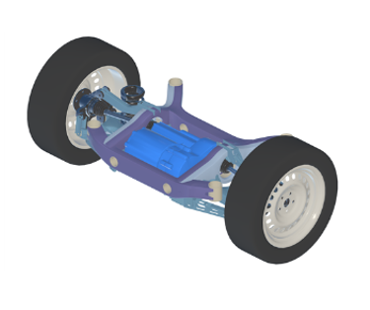
Detail of an S-in motion® rear chassis equipped with an e-motor
How does the chassis contribute to resolving these concerns?
PB: The chassis includes a series of fundamental components which manage vehicle dynamics and comfort. Chassis parts are also critically important to passenger safety, particularly when unexpected events occur while the car is in motion.
Did the S-in motion® Rear Chassis study identify weight savings?
JLT: We identified two rear-subframe solutions which use AHSS and offer significant mass savings. One is an integral link solution, and it has a weight of 28.6 kg. The second is a solution with five links which is 27.5 kg. Both compare favourably to existing aluminium solutions which weigh between 22.5 and 38.5 kg, and average 30.5 kg.
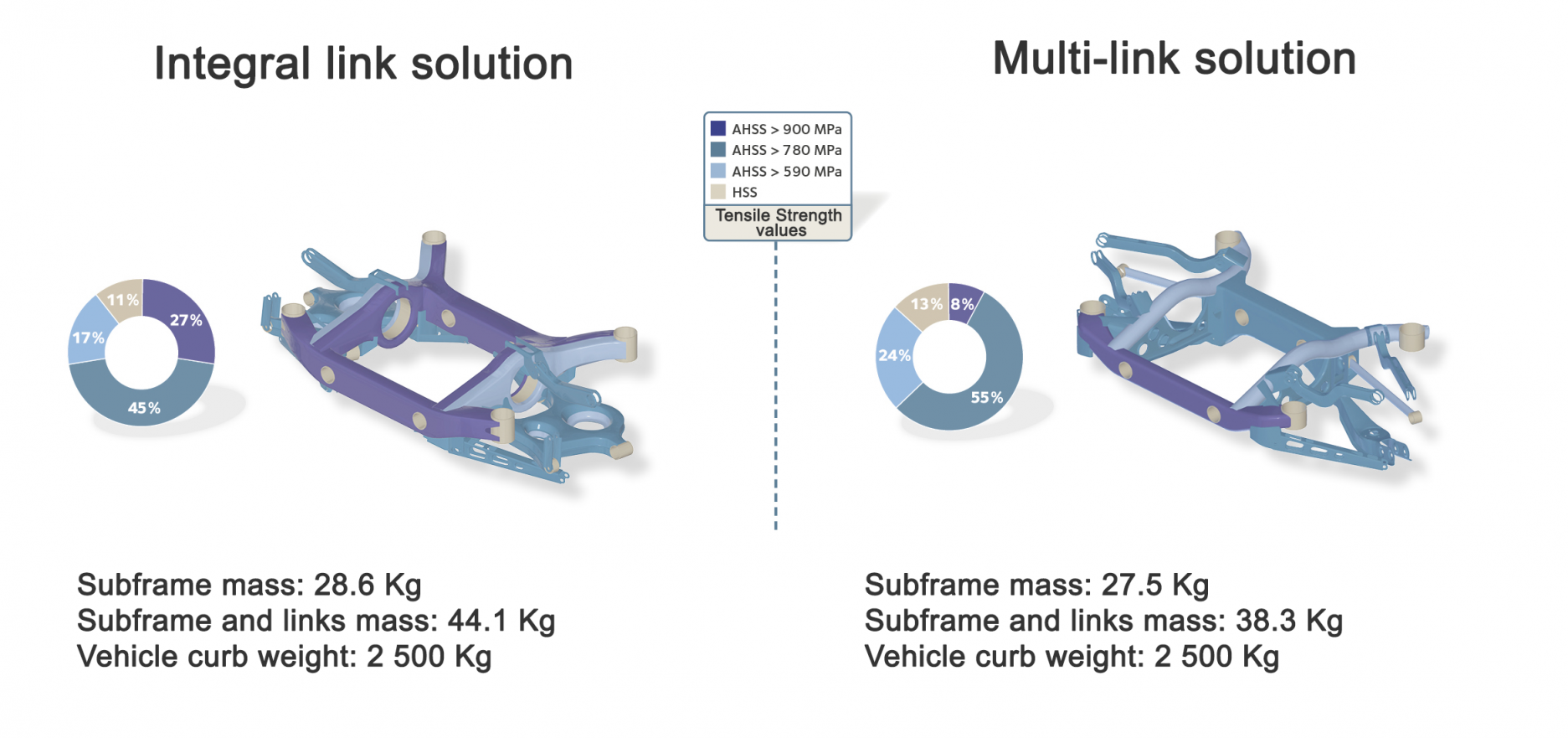
The S-in motion® study identified two optimised lightweight steel solutions for different chassis requirements
How do the steel solutions compare when it comes to the environment?
PB: A life cycle assessment (LCA) was performed to compare an aluminium solution against ArcelorMittal’s AHSS solution. It showed we can reduce CO2-equivalent emissions by up to 58 percent for an AHSS rear chassis when we compare it to one made from aluminium.
And when it comes to cost…?
JLT: We found that costs could be reduced by up to 45 percent with AHSS compared to existing and comparable aluminium solutions. That is a major saving for OEMs – and consumers.
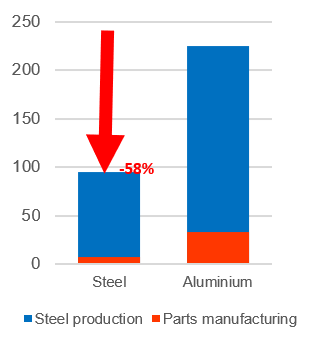
LCA comparing the CO2-equivalent footprint of an S-in motion® BEV rear chassis with one made from aluminium
Which AHSS grades did you use in the study, and why did you choose these grades?
JLT: AHSS are the best solution to achieve a revolution in mobility at an affordable cost. This S-in motion® Rear Chassis study demonstrates how ArcelorMittal’s ferrite-bainite grades and complex phase steels contribute to the overall performance of BEV chassis architectures.
Are there particular AHSS that are dedicated to chassis applications?
JLT: ArcelorMittal can offer customers a range of innovative hot-rolled ferrite bainite and complex phase steels for the chassis. Grades such as HR480Y590T-FB-HHE and HR660Y760T-CP-SF are best-in-class cold-stamped steel solutions at the 600 and 800 MPa tensile strength level.
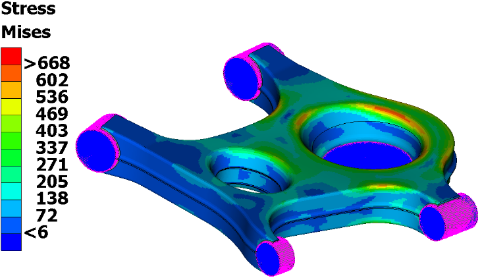
Strength load-case validation of a lower control arm made from HR660Y760T-CP
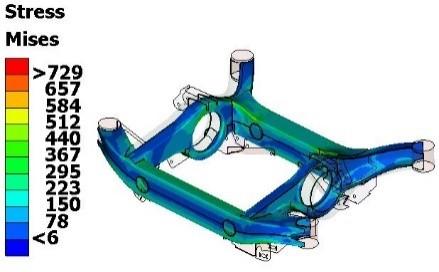
Strength load-case validation for subframe parts made from CR780Y980T-CP
What support does ArcelorMittal offer to OEMs?
PB: ArcelorMittal has a lot of experience with hot-rolled ferrite-bainite and complex phase steels, especially those used in the chassis area. These products exhibit a good balance between strength and elongation, and we can help OEMs get the most out of them.
ArcelorMittal’s Global R&D team can support OEMs and Tier-1 and -2 suppliers from the advanced engineering stage of a project, through to industrialisation, serial production, and end-of-life. And we are constantly working with our customers to develop new AHSS steel solutions which are lighter, stronger, and even easier to process.
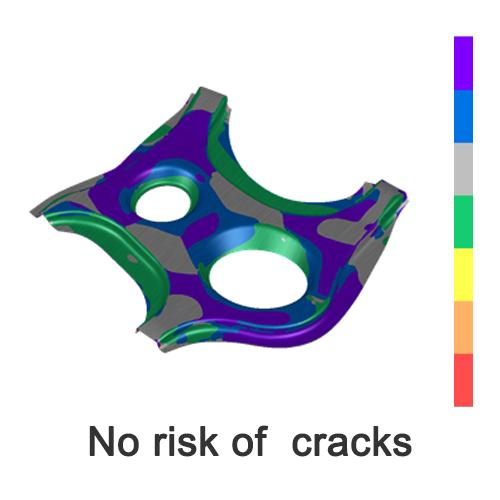
Formability assessment of grade HR660Y760T-CP in 1.8 mm thickness
Related info:






